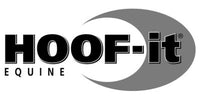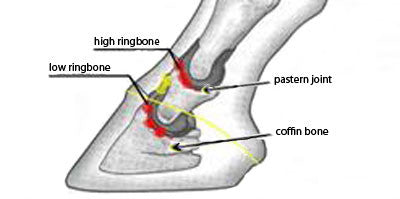Ringbone - Lameness in Horses
Ringbone refers to a disease which involves either the coffin joint or the pastern joint. High ringbone involves the pastern joint, low ringbone involves the coffin joint. Ringbone is further classified as periarticular, meaning the new bone is around a joint, but does not involve a joint surface; and articular, which is when the new bone involves a joint surface.
Any horse can develop ringbone over the years as a result of the cumulative effects of the trauma of repetitive motion stress, long term concussion, and nutritional imbalances. This condition is expedited by poor confirmation which causes the horse to stress one aspect of a joint more than another. For example, upright pasterns, or weak collateral ligaments of the pastern joints. Ringbone can also be caused by any injury which disturbs the periostium of the bone, especially wire cuts. The initial signs of ringbone are generally not specific and may range from a decrease in the normal performance of your horse to variable progressive lameness.
In early cases of acute periarticular ringbone, cold therapy applied twice daily for 20-30 minutes for several days will help to reduce swelling and pain. Your vet may also prescribe a cycle of anti-inflammatory medication and recommend stall rest for your horse.
In early cases of articular ringbone, where the horse is lame, your vet will most likely treat your horse with a cycle of long acting corticosteroid in the affected joint. Consult your veterinarian for advice in both types of early ringbone; especially if your horse is a valuable performance horse.
All bio-mechanical treatment for ringbone consists of trimming methods and the application of alternative shoeing that lessen the articulation of the affected joint. Trimming, by itself, is not going to be as effective as the application of therapeutic shoes. Proper trimming and the right set of corrective shoes can do wonders in getting your horse back to health.
Ringbone should be taken very seriously; more than one great horse has been shut down by this disease. As with anything equine, early detection is the key. Always pay close attention to your pony’s feet, and keep in good communication with your farrier.

